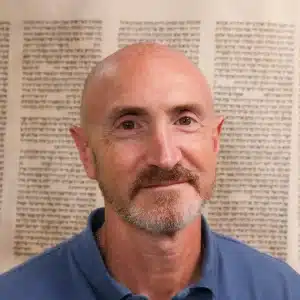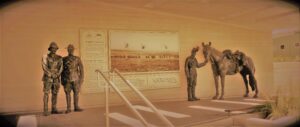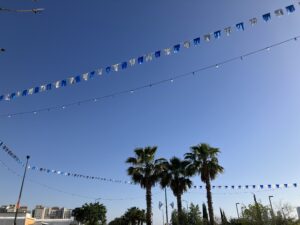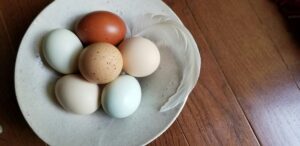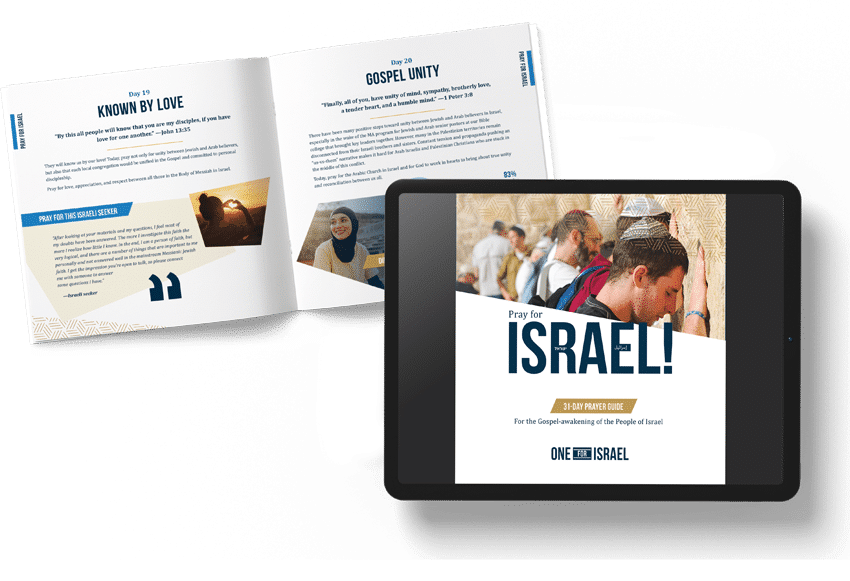“You shall make a mercy seat of pure gold, two and a half cubits long and one and a half cubits wide. You shall make two cherubim of gold, make them of hammered work at the two ends of the mercy seat. Make one cherub at one end and one cherub at the other end; you shall make the cherubim of one piece with the mercy seat at its two ends. The cherubim shall have their wings spread upward, covering the mercy seat with their wings and facing one another; the faces of the cherubim are to be turned toward the mercy seat. “You shall put the mercy seat on top of the ark, and in the ark you shall put the testimony which I will give to you. There I will meet with you; and from above the mercy seat, from between the two cherubim which are upon the ark of the testimony, I will speak to you about all that I will give you in commandment for the sons of Israel” (Exod 25:17-22).
This passage not only presumes that its readers know what a cherub is, but also why two models of them were placed on either side of the ark of the covenant and upon the inner curtains all around the holy of holies (Exod 26:1, 31; 36:8, 35). To a large extent, knowledge about what cherubim are has been lost to modern readers. But one thing we can say for certain: cherubim in the Bible are winged creatures most commonly associated with God’s presence in the holy of holies (see 1 Kings 6:23-29; 7:28, 32, 35-36; 8:6-7; Ezek 41:18-20, 25).
And there are two other important details we can say for certain. The first time cherubim are mentioned in the Bible is in Genesis 3:24. They guarded the eastern entrance into the Garden of Eden, where God had once walked with his people. Second, the cherubim in the tabernacle and temple were not real. They were only copies. These two pieces of information are enough to help us make sense of the meaning of cherubim in the tabernacle:
The copies of cherubim functioned as signs pointing to something real, and something so much better. They were constant reminders of the real Garden of Eden that was barred from human entrance in the prehistoric past.
They also served as constant reminders of the real Garden of Eden which will be opened to God’s people in the eschatological future.
It can hardly be a coincidence, therefore, when Yeshua died that the temple veil with its imprint of cherubim was torn in two (Matt 27:51; see Exod 26:31). Through the sacrificial death of Yeshua, we are granted unhindered access to God’s heavenly presence in the present (Heb 10:19-22). And we also cling to the hope of eternal access to God’s physical presence in the new Jerusalem in the future. One day, dear friends, the unseen will finally become seen, God will dwell with us, and we will finally be able to feast together upon the tree of life!
“By the river on its bank, on one side and on the other, will grow all kinds of trees for food. Their leaves will not wither and their fruit will not fail. They will bear every month because their water flows from the sanctuary, and their fruit will be for food and their leaves for healing” (Ezek 47:12).
“Then he showed me a river of the water of life, clear as crystal, coming from the throne of God and of the Lamb, in the middle of its street. On either side of the river was the tree of life, bearing twelve kinds of fruit, yielding its fruit every month; and the leaves of the tree were for the healing of the nations” (Rev 22:1-2).


